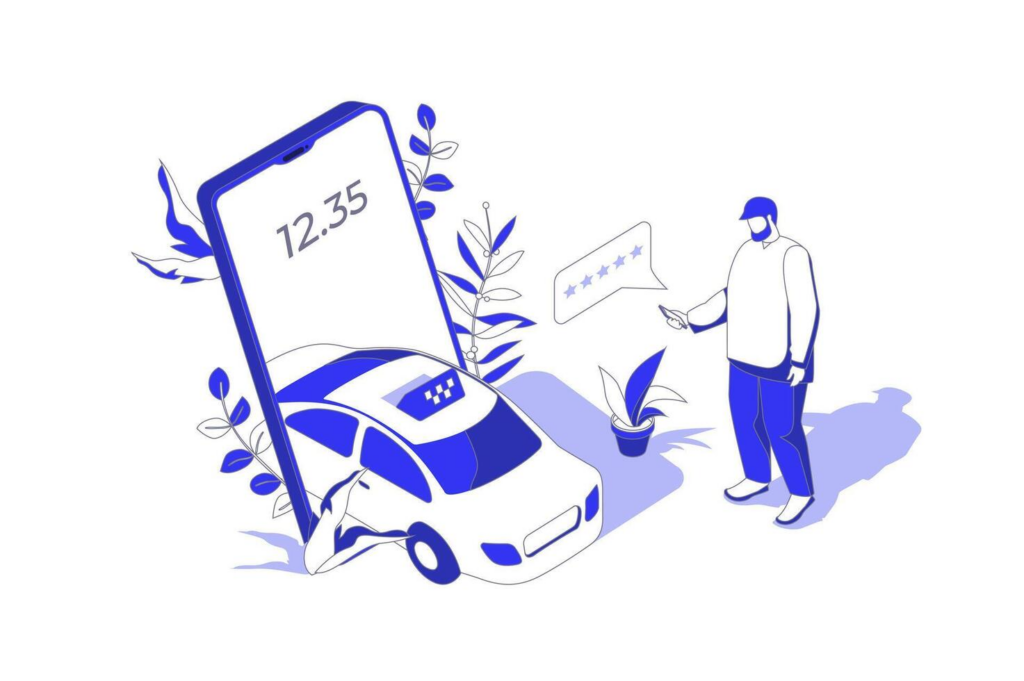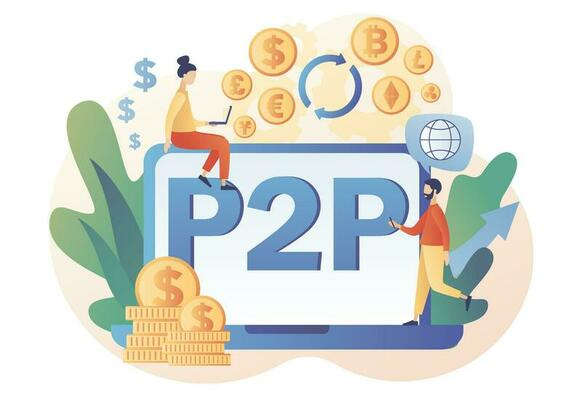The dawn of 5G technology is not just a leap in connectivity; it’s a seismic shift that’s reshaping the very landscape of mobile app development in Malaysia and all over the world. With lightning-fast data transfer speeds, reduced latency, and enhanced reliability, 5G is unlocking new horizons for app companies and developers, enabling them to create immersive and responsive experiences that were not even imaginable before. This intersection of 5G and mobile app development can be considered one of the biggest technological advancements of the era, redefining how we interact, work, and play in the digital arena of mobile apps. Let’s explore this exciting convergence and understand the potential it holds for the future of mobile applications.
Changing Landscape of Cellular Technologies
Evolution from 1G to 4G
The journey of cellular technologies has been nothing short of remarkable. From the birth of 1G in the early 1980s, which introduced us to the world of mobile voice calls, to the launch of speedy 4G in 2009, enabling high-speed internet and video streaming, the evolution has been rapid and transformative.
- 1G: Launched in 1983, 1G marked the beginning of wireless communication with analog voice calls.
- 2G: Introduced in 1991, 2G brought digital voice calls and SMS into the world, laying the foundation for mobile data.
- 3G: Launched in 2001, 3G enabled mobile internet browsing and video calling, with speeds up to 2 Mbps.
- 4G: Rolled out in 2009, 4G transformed mobile connectivity, bringing speeds up to 100 Mbps, paving the way for HD video streaming, online gaming, and more.
The progression from 1G to 4G has not only enhanced the speed and quality of mobile communication but also expanded the possibilities for mobile app development, leading to the creation of innovative and high-end applications that have become integral to our daily lives.
Introduction of 5G
The inception of 5G is the latest milestone in this evolutionary network journey, promising to take mobile connectivity to unprecedented heights. With potential speeds of up to 20 Gbps, 5G is set to be 100 times faster than 4G.
But 5G is not just about speed; it’s about creating a seamless and interconnected world. The low latency and high bandwidth of 5G are opening doors to new opportunities for mobile app developers and businesses, enabling them to create applications that are more responsive, immersive, and intelligent, leading to better customer service.
From powering augmented reality experiences to facilitating real-time collaboration in remote work, 5G is set to redefine the boundaries of what’s possible in mobile app development.
How Will 5G Technology Work?
5G technology, with its unique functionality, is rooted in the utilization of three distinct spectrum bands. Each band plays a unique role in delivering the high performance, speed, and coverage. Here’s how:
1. High Band Spectrum
The High Band Spectrum is the powerhouse behind 5G’s impressive performance, capable of reaching speeds up to 10 Gbps. It’s the band that delivers the lightning-fast connectivity we typically associate with 5G. However, its high frequency means that it has a shorter range and requires more extensive coverage. It struggles to penetrate obstacles like walls, necessitating a dense network of antennas.
2. Mid Band Spectrum
Positioned between the high and low bands, the Mid-band Spectrum offers a balanced approach. It provides speeds that can reach up to 1 Gbps, faster than the low band but with some limitations in penetrating solid objects like walls. It’s considered a crucial component in delivering consistent 5G performance across various environments.
3. Low Band Spectrum
Known as the 1GHz spectrum, the Low Band Spectrum is essential for carriers in the U.S. It’s the band that ensures broad coverage and the ability to penetrate walls, making it vital for both urban and indoor connectivity. While it may not offer the blazing speeds of the high band, its reliability and extensive reach make it a foundational element of 5G networks.
Key Features of 5G Technology
The introduction of 5G technology is more than just a regular upgrade; it’s a revolution that brings a plethora of features to the table, each contributing to a new era of 5G mobile app development. Let’s take a deeper look:
Reduced Latency
5G technology offers significantly reduced latency, dropping to as low as 1 millisecond. This reduction in delay is vital for real-time applications such as augmented reality and remote surgeries. For businesses, this means the ability to create more responsive and real-time interactive experiences.
Improved Network Density
With 5G, the network density is also vastly improved, allowing more devices to connect simultaneously without congestion. This feature is crucial for the Internet of Things (IoT) and smart city applications, enabling developers to create interconnected and seamless experiences across multiple devices.
Faster Speed
As stated before, 5G promises speeds up to 20 Gbps, making it 100 times faster than 4G. This incredible speed allows 5G mobile app development companies to create applications that require heavy data transfer, such as 4K video streaming, without any lag or buffering.
Increased Battery Life
5G technology is designed to be more energy-efficient, leading to increased battery life for devices. This efficiency and sustainability is a boon for mobile app development, allowing developers to create applications that are not only powerful but also energy-efficient, enhancing the overall user experience.
Future Advances
The architecture of 5G is built for future advancements, making it adaptable and scalable. This forward-thinking design ensures that mobile app developers can continue to innovate and adapt to emerging technologies and user needs without being constrained by network limitations.
Improved Bandwidth
5G offers improved bandwidth, accommodating more data and users without compromising performance. This feature is the lifeblood for 5G mobile app development, enabling companies to create applications that can handle extensive traffic and data-intensive tasks, such as virtual reality experiences and large-scale collaborative projects.
Impact of 5G on Mobile App Development Industry
The advent of 5G technology is not just a step forward in connectivity; it’s a giant leap that is reshaping the app development industry across sections. Let’s dissect the matter further:
Integration of IoT
5G’s improved network density and low latency enable seamless integration of the Internet of Things (IoT). Mobile app developers can now create interconnected ecosystems of devices, sensors, and applications, paving the way for smart homes, intelligent transportation, and more. The potential for innovation is boundless.
Immersive Technology
With 5G’s high-speed data transfer and reduced latency capabilities, immersive technologies like virtual reality (VR) and augmented reality (AR) are becoming more accessible and realistic. Even the developing countries can be seen using these immersive solutions without any trouble these days. Mobile app developers can now create engaging and lifelike experiences, transforming industries like education, healthcare, and entertainment.
Smooth Video Streaming
The incredible speed of 5G ensures smooth video streaming without buffering or lag. This enhancement has allowed 5G mobile app development companies to offer high-quality video content, live streaming, and interactive video features, enhancing user engagement and satisfaction.
Improved GPS Performance
5G’s precise location tracking and improved GPS performance enable developers to create applications with accurate navigation, location-based services, and personalized recommendations. From ride-sharing apps to local business finders, the possibilities are endless.
Enhanced Cloud Compatibility
5G’s high bandwidth and speed allow for seamless cloud compatibility, enabling mobile apps to access and process data in real-time without any noticeable lag. This feature further enables developers to create more flexible and scalable applications, leveraging cloud computing for improved performance and efficiency.
Emergence of Personalized Chats
The low latency and high-speed data transfer of 5G also sets the stage for the emergence of personalized chat experiences. Developers can integrate AI-powered chatbots and real-time communication features in the apps, offering personalized interactions and support, enhancing user engagement and loyalty.
Conclusion
With 5G’s lightning-fast speeds, reduced latency, and robust reliability, the doors are flung wide open for app developers to innovate and create experiences that were once beyond reach.
This synergy between 5G and mobile app development is not just about faster connections; it’s about forging a new era of digital interaction, where your vision meets reality. Need professional help integrating 5G to your upcoming mobile app? Segwitz is your one-stop-shop tech strategy partner, from conceptualization to execution. Don’t forget to also check out our other blogs like “Top 5 Mobile App Development Trends in 2023” and “How to Develop a Successful eLearning App”
FAQs
Q. What Makes 5G Technology a Game-Changer for Mobile App Development?
A. 5G technology offers unprecedented speeds, reduced latency, and enhanced connectivity, enabling app developers to create more immersive and responsive experiences.
Q. How Does 5G’s Spectrum Band System Work?
A. 5G utilizes three distinct spectrum bands: High Band for top speeds, Mid-band for balanced performance, and Low Band for extensive coverage, each contributing to 5G’s overall functionality.
Q. What Are the Key Impacts of 5G on the Mobile App Development Industry?
A. 5G’s integration is reshaping mobile app development by enabling IoT, enhancing AR and VR experiences, improving video streaming, and facilitating more personalized and interactive applications.



